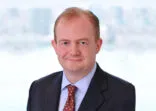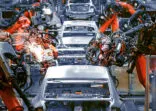Harmstone recently relocated to Singapore from London to oversee the expansion of the global balanced risk control team in the region.
He said that although global recession is not his firm’s base case, he nonetheless sees the trade dispute between the US and China as a main concern.
“We are concerned that these kind of tariff-related pressures combined with other elements that have been present in the economy could lead to a recession if continued,” he told FSA. “Until the tariffs tensions grew, we were in a constructive environment.”
Harmstone also manages the mixed asset Global Balanced Risk Control Fund along with several other funds in the “global balanced” series, which are authorised by MAS in Singapore.
He has been adjusting the mixed asset products in response to trade tensions.
During May, when trade tensions escalated, he moved from an equity weight of 60% on 30 April to 21.4% on 31 May, he said.
“This was broadly equally spread across equity markets, although we reduced our overweight in emerging Asia to neutral and raised our underweight in US Treasuries to neutral.”
He also slightly increased bonds and maintain a low duration position, while selling bonds that were “mispricing the risk of recession”.
Risk, not benchmark
Harmstone believes his firm’s risk control differs from other firms because the starting point for constructing a portfolio is not a benchmark but risk.
“Risk replaces the benchmark, while in most strategies that doesn’t happen. Or they are backward-looking instead of forward-looking.”
His team defines risk as volatility.
“Each portfolio has a defined volatility target, which acts as the key determinant of the broad asset mix,” he said.
The firm’s mixed asset Global Balanced Risk Control Fund includes global equities and global fixed income, commodity-linked investments and cash. ”The only requirement for assets to be included is that they are liquid.”
It comes with a volatility target of 4%-10%. The team can adjust the asset mix “according to the prevailing volatility environment, in order to provide a stable risk profile for the overall portfolio”.
He emphasised that the 4%-10% refers to the target level of volatility for the overall portfolio and not to the proportion of assets held in any particular asset class, or type of assets, such as risk assets.
“Over time we aim to achieve a realised volatility towards the middle of the range, [6%-7%], which is in line with our historical track record.”
For the three years to 20 June 2019, the Global Balanced Risk Control had an annualised maximum loss of -3.52%, which was the third best (lowest loss) out of 117 mixed asset funds registered for sale in Hong Kong and Singapore, according to FE data.
Annualised volatility over the same period was 5.39%, which was the 15th lowest volatility fund in the category of peers and better than the category average of 5.90%.
However, the fund has under-performed the category average in terms of three-year cumulative returns:


















